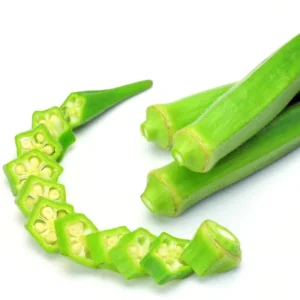-
×
 Garlic Bulbs For Planting, Seed Garlic Bulbs, 1 Pound - Red Chesnok Garlic
$29.99
Garlic Bulbs For Planting, Seed Garlic Bulbs, 1 Pound - Red Chesnok Garlic
$29.99 -
×
 8 Inch Tall Mexican Petunias Live Plants Pink, Well Rooted Mexican Petunias Live Plants For Planting Outdoors, Potted
$25.99
8 Inch Tall Mexican Petunias Live Plants Pink, Well Rooted Mexican Petunias Live Plants For Planting Outdoors, Potted
$25.99 -
×
 Liriope Muscari Lily Turf Live Plant, Aztec Ornameantal Grass Plant Live Clump, In 6 Inch Pot, Perfect for Ground Cover and Landscaping
$65.98
Liriope Muscari Lily Turf Live Plant, Aztec Ornameantal Grass Plant Live Clump, In 6 Inch Pot, Perfect for Ground Cover and Landscaping
$65.98 -
×
 Green Okra Seeds, Spineless Okra Seeds, Vegetable Seeds For Planting Outdoor Indoors, 400 Seeds
$17.49
Green Okra Seeds, Spineless Okra Seeds, Vegetable Seeds For Planting Outdoor Indoors, 400 Seeds
$17.49 -
×
 Set of 3 Liriope Muscari Plants Live, Lily Turf Ground Cover, 6 Inch Starter Plants for Landscaping
$24.99
Set of 3 Liriope Muscari Plants Live, Lily Turf Ground Cover, 6 Inch Starter Plants for Landscaping
$24.99 -
×
 Red Navel Orange Tree Plant, Outdoor Navel Orange Tree 3 Feet Tall Including Gallon Pot Tall, Live Navel Orange Fruit Tree For Outdoor Planting
$126.98
Red Navel Orange Tree Plant, Outdoor Navel Orange Tree 3 Feet Tall Including Gallon Pot Tall, Live Navel Orange Fruit Tree For Outdoor Planting
$126.98 -
×
 Lemon Cucumber Seeds, 50 Cucumber Plant Seeds, Cucumber Seeds For Planting Outdoors Indoors, Vegetable Seeds
$8.49
Lemon Cucumber Seeds, 50 Cucumber Plant Seeds, Cucumber Seeds For Planting Outdoors Indoors, Vegetable Seeds
$8.49 -
×
 Live Blood Orange Tree, Orange Outdoor Fruit Tree 18 To 24 Inches Tall, Orange Plant Fruit Tree Live In Pot, Live Tree For Outdoor Planting
$126.98
Live Blood Orange Tree, Orange Outdoor Fruit Tree 18 To 24 Inches Tall, Orange Plant Fruit Tree Live In Pot, Live Tree For Outdoor Planting
$126.98 -
×
 Tropical Milkweed Plants, 2 Yellow Red Milkweed Flower Plants Live, Multi Color Milkweed Plants
$25.99
Tropical Milkweed Plants, 2 Yellow Red Milkweed Flower Plants Live, Multi Color Milkweed Plants
$25.99
Japanese Red Wineberry Plant, Wineberry Edible Fruit Shrub, Bare Root 1-2 Feet Tall
From $32.99
Add beauty and flavor to your garden with the Japanese Wineberry! This hardy, edible fruit shrub boasts striking red stems and delicious, tangy-sweet berries. Bare root plant, 1-2 feet tall.
Categories: Fruits, Shrub seeds, Shrubs
Tags: bare root shrub, edible fruit shrub, Japanese wineberry, red wineberry plant, wineberry plant
Estimated arrival
Dec 19
Dec 24 - Dec 26
Dec 29 - Jan 02
Shipping and return policies: Our 30-Day Plant Health Guarantee covers issues with your plants within the first 30 days. Get in touch with us via email, and our team will review your concerns and, if necessary, provide you with a one-time replacement at no cost.
Bring Exotic Beauty to Your Garden with Japanese Wineberry
Bring a touch of exotic beauty to your garden with the Japanese Wineberry (Rubus phoenicolasius). Known for its eye-catching red stems and clusters of sweet-tart berries, this unique shrub offers more than just ornamental value. The Japanese Wineberry plant produces delicious, edible berries perfect for fresh eating, jams, or baking, making it a versatile choice for garden enthusiasts and foodies alike. This is a great addition to any edible landscape.
This hardy perennial shrub reaches up to 6-10 feet in height and spread, forming a lush and productive presence in your garden or edible landscape. The bright green foliage and fuzzy red calyxes make this plant a visual treat, even outside the fruiting season. Thriving in USDA zones 5-8, the Japanese Wineberry tolerates a range of soil types but prefers moist, well-drained soil and performs well in full sun to partial shade. The red wineberry plant is a standout in any garden.
Benefits:
- Edible Fruit: Yields small, red, tangy-sweet berries, great for fresh eating, jams, and baking.
- Ornamental Appeal: Red stems and fuzzy fruit calyxes offer year-round visual interest.
- Low Maintenance: Hardy and disease-resistant; minimal care required once established.
- Wildlife-Friendly: Attracts birds and pollinators, perfect for eco-friendly landscapes.
Special Features:
- Unique Appearance: Striking red stems, fuzzy fruit capsules, and bright green leaves for standout visual interest.
- Fast-Growing: Quickly fills garden spaces, ideal for creating a beautiful, productive hedge.
- Prolific Fruiting: Produces multiple harvests of berries from mid-summer to early fall.
Whether used in a container garden or a full landscape, the Japanese Wineberry promises beauty and a bountiful harvest, making it a practical and ornamental choice. Cultivate your own wineberry edible fruit shrub today!
FAQs: Your Japanese Wineberry Questions Answered
Here are some frequently asked questions about the Japanese Wineberry:
- How often should I water my Japanese Wineberry?
Water regularly during the first growing season to establish roots. Once established, it becomes relatively drought-tolerant, though it prefers moist soil. - When does Japanese Wineberry bear fruit?
It typically bears fruit from mid-summer to early fall, with berries ripening gradually for multiple weeks of harvest. - Is Japanese Wineberry invasive?
In some areas, Rubus phoenicolasius may spread vigorously. Check local guidelines and consider planting in a contained space if needed. - How do I harvest Japanese Wineberry?
Harvest when berries turn a deep red and pull easily from the plant. They are perfect for fresh eating or recipes. - Can I grow Japanese Wineberry in containers?
Yes, but ensure a large enough container (at least 15-20 gallons) and regular pruning to manage its growth. - How tall will my Japanese Wineberry get?
Expect your plant to reach between 6-10 feet tall and wide at maturity. Regular pruning can help maintain a smaller size if desired. - What kind of soil is best for my Japanese Wineberry?
While adaptable, the Japanese Wineberry thrives in moist, well-drained soil rich in organic matter. Amending your soil with compost before planting is beneficial. - How much sunlight does my Japanese Wineberry need?
This shrub performs best in full sun to partial shade. At least 4-6 hours of direct sunlight will encourage optimal fruit production. - Is the Japanese Wineberry deer resistant?
While no plant is completely deer-proof, Japanese Wineberry is generally considered to be moderately deer-resistant. - How quickly will my bare root Japanese Wineberry establish itself?
With proper watering and care during the first growing season, your bare root plant should establish a strong root system and begin to show significant growth in the following spring.
| Size | 1 Plant, 2 Plants, 4 Plants |
|---|
Only logged in customers who have purchased this product may leave a review.
Product Details
-
USDA Hardiness Zone
5-8 -
Soil Type
Prefers moist, well-drained soil -
Sunlight Exposure
Full sun to partial shade -
Expected Planting Period
Best planted in spring or early fall
Related products
USDA 5-9
Sold 90 products
$27.99+
This product has multiple variants. The options may be chosen on the product page
USDA 3-9
Sold 59 products
$29.99Up to - 12%
USDA 3-8
Sold 82 products
Up to - 9%
USDA 4-8
Sold 60 products
USDA Zones 5-9
Sold 96 products
From $34.99+
This product has multiple variants. The options may be chosen on the product page
USDA Zones 3-8
Sold 78 products
From $34.99+
This product has multiple variants. The options may be chosen on the product page
USDA 5-9
Sold 89 products
$34.99+
This product has multiple variants. The options may be chosen on the product page
Up to - 11%
USDA 3-8
Sold 92 products

 8 Inch Tall Mexican Petunias Live Plants Pink, Well Rooted Mexican Petunias Live Plants For Planting Outdoors, Potted
8 Inch Tall Mexican Petunias Live Plants Pink, Well Rooted Mexican Petunias Live Plants For Planting Outdoors, Potted  Liriope Muscari Lily Turf Live Plant, Aztec Ornameantal Grass Plant Live Clump, In 6 Inch Pot, Perfect for Ground Cover and Landscaping
Liriope Muscari Lily Turf Live Plant, Aztec Ornameantal Grass Plant Live Clump, In 6 Inch Pot, Perfect for Ground Cover and Landscaping  Green Okra Seeds, Spineless Okra Seeds, Vegetable Seeds For Planting Outdoor Indoors, 400 Seeds
Green Okra Seeds, Spineless Okra Seeds, Vegetable Seeds For Planting Outdoor Indoors, 400 Seeds  Set of 3 Liriope Muscari Plants Live, Lily Turf Ground Cover, 6 Inch Starter Plants for Landscaping
Set of 3 Liriope Muscari Plants Live, Lily Turf Ground Cover, 6 Inch Starter Plants for Landscaping  Red Navel Orange Tree Plant, Outdoor Navel Orange Tree 3 Feet Tall Including Gallon Pot Tall, Live Navel Orange Fruit Tree For Outdoor Planting
Red Navel Orange Tree Plant, Outdoor Navel Orange Tree 3 Feet Tall Including Gallon Pot Tall, Live Navel Orange Fruit Tree For Outdoor Planting  Lemon Cucumber Seeds, 50 Cucumber Plant Seeds, Cucumber Seeds For Planting Outdoors Indoors, Vegetable Seeds
Lemon Cucumber Seeds, 50 Cucumber Plant Seeds, Cucumber Seeds For Planting Outdoors Indoors, Vegetable Seeds  Live Blood Orange Tree, Orange Outdoor Fruit Tree 18 To 24 Inches Tall, Orange Plant Fruit Tree Live In Pot, Live Tree For Outdoor Planting
Live Blood Orange Tree, Orange Outdoor Fruit Tree 18 To 24 Inches Tall, Orange Plant Fruit Tree Live In Pot, Live Tree For Outdoor Planting  Tropical Milkweed Plants, 2 Yellow Red Milkweed Flower Plants Live, Multi Color Milkweed Plants
Tropical Milkweed Plants, 2 Yellow Red Milkweed Flower Plants Live, Multi Color Milkweed Plants 























Reviews
There are no reviews yet.